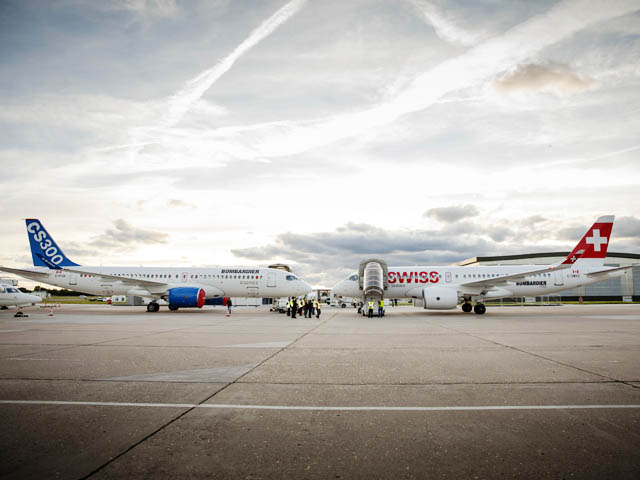Leeham News and Analysis
There's more to real news than a news release.
Airbus’ and Boeing’s Payload/Range for VLAs
- Bloomberg reported this week that Airbus is now offering the A350-900LR to Singapore Airlines to reopen ultra-long haul US direct routes. We predicted July 14 that Airbus would offer the LR. We offered some high-level analysis about how Airbus could achieve a long range version of the A350-900; the Bloomberg piece confirms our analysis.
By Bjorn Fehrm
Subscription required.
Introduction
Aug. 19 2015, ©. Leeham Co: We will now finish our series over Boeing’s changes to its configuration rule sets by looking at how this affects the Very Large Aircraft (VLA) segment.
Airbus and Boeing used to describe the VLAs in their line-ups using three class cabins, albeit with different standards. Now Boeing has changed its standard to a modern three class seating while Airbus has changed to a four class cabin, including premium economy.
We have enough information of the A380 equipped with a three class cabin to be able to make a comparison using three class rule sets. We will therefore apply a three class cabin to the A380 and 747-8 that will have modern seating standards and pair that with Boeing’s tougher payload weights and enroute reserves.
Summary:
- Boeing’s new Standard rules three class cabin and our normalized three class cabin for A380 and 747-8i are close in their configurations.
- We use our knowledge of these standards to create a level playing field on the cabin side.
- We also apply the new tougher passenger and bags rules + the tougher reserves policy that Boeing’s new Standard rule set prescribes.
- It used to be that A380 had a range advantage at max passenger payload. We check if this remains under the new rules.
Airbus’ and Boeing’s Payload/Range for Dual Aisle.
By Bjorn Fehrm
Subscription required.
Introduction
Aug. 17 2015, ©. Leeham Co: In our series over Boeing’s changes to its configuration rule sets, we will now continue with the dual aisle aircraft. Here the differences between Airbus and Boeing are larger. Boeing used to be specifying a three class cabin and Airbus two class. Now Boeing has changed to two class and Airbus is just changing to three class.
There is a bit of difference in the Airbus change to three class and the three class that Boeing had until now. Airbus changes from modern two class to a modern three class with Business, Premium Economy and Economy. Boeing’s change was from an outdated three class with old style First, Business and Economy to a modern two class with lie flat business section.
The new Boeing two class and historical Airbus two class are close in configuration. These end up within a seat or two of each other and also within our normalized two class cabins. As these cabin rules are similar, we use our normalized cabin data to compare the payload range of the aircraft when all apply the new, tougher passenger+bags weight rules and an equalized reserves policy.
Summary:
- Airbus’ two class rules and Boeing’s new two class Standard rules are close in their configurations.
- They are also close to our Normalized rule set. We use our normalized rule set to level the playing field on the cabin side.
- We can then apply the new tougher passenger and bags rules that Boeing’s Standard rule set prescribes for the twin aisle aircraft and see how they compare.
- We also use the same reserves policy for the comparison. Read more
Bjorn’s Corner: Holiday times
14 August 2015, ©. Leeham Co: It is holiday time in Europe and a lot of the European industry is shut down for summer break. This includes the Airbus Final Assembly Line (FAL) in Toulouse. Industrial holiday shut down or not depends a lot on the country’s industrial history.
Traditionally industry has closed shop for the month of July in the north of Europe and August in the south. For production-heavy industries with a lot of personnel in assembly work this is still the case. Examples are manufacturing industries like the auto industry, electromechanical goods industries and also the European aircraft industry.
For raw material industries, it depends if the manufacturing process can be interrupted for the three to four weeks a summer holiday would span. For many process chains, this is not possible. I earned my school summer break money on such an industry, replacing the worker that took his three or four weeks off.
Other parts of the world do not have summer breaks where the industry closes the doors and things go quiet. An example is the US, where, for example, Boeing produces aircraft 12 months of the year. Available vacation days are less than in Europe, typically two to three weeks against the typical four or five weeks in Europe. US vacations are usually taken spread over the year and the company normally doesn’t shut down production during the summer period. Read more
Airbus’ and Boeing’s Payload/Range for Single Aisle
By Bjorn Fehrm
Subscription required.
Introduction
Aug. 13 2015, ©. Leeham Co: Boeing this month changed the way it presents its aircraft in important areas like seating, weight and performance configurations, in short its “rule set.” After using a standardized but old rule set for 20 years, it updated all data around how far its aircraft can transport a standardized payload.
Airbus at the same time is also changing how it presents its aircraft. Right now the dual aisle wide bodies are going from a two class to a three class cabin in its rule set. While Boeing is leaving three class for two class, Airbus is going in the other direction.
Why these movements and are there any common themes in these conflicting changes?
We go behind the scenes to decipher the changes and decode what it all means when one want to compare Boeing and Airbus products. We start with the single aisle aircraft this week.
Summary:
- Airbus and Boeing had rather small differences in their rules and how they characterized single aisle aircraft up until this month.
- From now on Boeing is using higher average passenger+bags loads and have added additional equipment to the aircraft’s empty weight specification.
- We show what these changes mean for the aircraft’s performance. We also use our model to show Airbus single aisle aircraft’s range should they use the same rules as Boeing’s aircraft.
Mitigating risk, lessons learned as Boeing heads into MAX, 777X production
Aug. 12, 2015, © Leeham Co. Mitigating risk and taking lessons learned from across the entire 7-Series families are key to improving productivity, cutting costs and

Greg Smith, chief financial officer of The Boeing Co. Source: Boeing.
preparing for the transition from the 737NG to the MAX and from the 777 Classic to the 777X, the chief financial officer of The Boeing Co. said today at the Jefferies Global Industrials Conference.
Greg Smith told the conference, which was webcast, that putting all new airplane development under one department enables a common understanding of what’s going on across the product lines and therefore the new product lines benefit to reduce risk and create efficiencies.
The lessons learned from the 787 lines in Everett and Charleston “are very encouraging,” Smith said. “We are getting better learning from those efficiencies that transition to other parts of the business.”
Boeing is shutting the 787 surge line in Everett because production on the line is more inefficient than the main Everett and Charleston lines.
“The surge line has reached a point where it’s more inefficient than efficient,” Smith said. “We’ve reached a point of maturity in production where it’s clearly not needed. Getting the maturity of those two lines up gives you the confidence to shut down the surge line.”
B/E Aerospace sees “flat” widebody deliveries through 2016
Aug. 12, 2015, © Leeham Co.: Widebody deliveries are “flat as a pancake” and will remain so through 2016 before going up, driven by the Airbus A350, says a major  supplier.
supplier.
Officials of B/E Aerospace appeared yesterday at the Jefferies Co Global Industrials Conference, making the near-term forecast. B/E is best known as a seat supplier but also supplies galleys and lavatories.
With passenger load factors now routinely running around 85% and traffic growing, B/E’s backlog is greater than ever and the OEMs, pressured by airlines for on-time deliveries, likewise pressure suppliers. B/E competitor Zodiac had difficulties meeting demand late last year and early this year.
“You cannot image how much stress is created cannot deliver an airplane on time and the reason is a supplier,” a B/E official said. B/E has been able to keep up with demand.
Bjorn’s Corner: Why is the real range of an airliner always shorter then what the OEM says?
07 August 2015, ©. Leeham Co: Now that we have explained the range consequences of weight and fuel limited airplane operations, we might as well explain the last important part of the range of an airliner: Why the practical range is always shorter than what the OEM says.
When an airliner OEM gives the design or brochure maximum range of an aircraft, they do that with an aircraft in a “show-room” configuration and which is loaded with a filled cabin only; no cargo is included in the calculation. Further, in the cargo area, there is only bulk-loaded passenger bags. Container loading of the bags would have cost tare weight for the containers used and weight is to be avoided when stipulating the maximum design range.
In practice, we would have to consider tare weight for bags containers and possible cargo when discussing what practical range an airline can plan for a certain aircraft model. But this is far from the whole story. Here is what has to be considered in addition.




